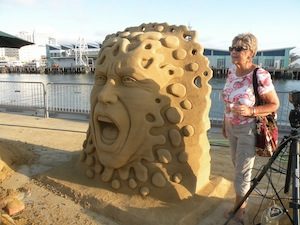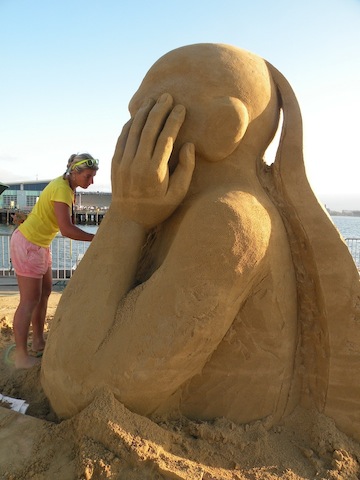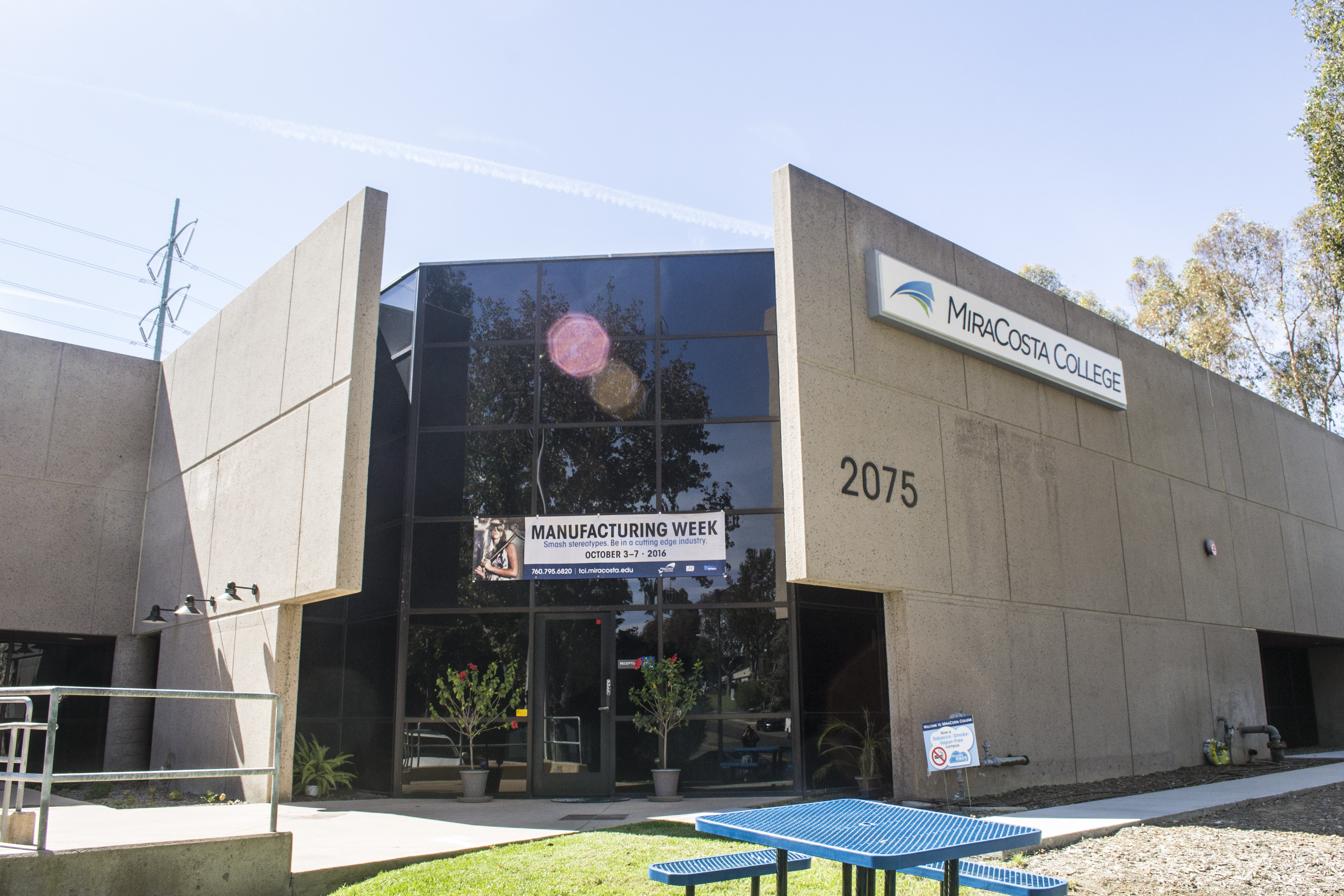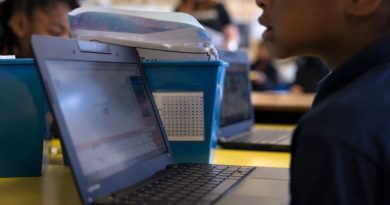Daily Business Report-Sept. 2, 2016
Sand artist at work at Downtown’s B Street Pier. (Photo: Manny Cruz)
Weekend
U.S. Sand Sculpting Challenge

The fifth annual U.S. Sand Sculpting Challenge returns to San Diego this weekend.
This must-see event, which will be held at the B Street Pier Downtown, will feature the work of World Master Class sand artists who will be sculpting for four days.
With more than 300 tons of sand, sculptors from all around the world will be in San Diego including Katsuhiko Chaen from Japan, Agnese Rudzite-Kirillova from Latvia, and Benjamin Probanza from Spain.
On top of witnessing some impressive work, attendees can expect to live entertainment, gourmet food trucks and kid-friendly activities.
Tickets start at $6 for kids and $8 for adults.
For more information, go to www.ussandsculpting.com.

— Times of San Diego

SDEA Wage Survey: San Diego Above
National Average in Merit Increases
Businesses are opening up their pocketbooks more and rewarding their employees with higher than average wage increases, according to the San Diego Employers Association’s 68th annual San Diego Wage and Salary Survey.
“This finding adds another positive indicator to the continued recovery and growth of the region’s economy,” saidChris Bryant, resident and CEO of the association.
The average increase that was provided for non-exempt employees was 3.5 percent and was 4.3 percent for exempt employees. Projections for 2016 continue to show increases in line with 2015’s numbers.
“These are the highest numbers we have seen in years,” said Bryant, “and these increased amounts are even higher than the national average of 3 percent.”
In addition to monitoring the average salary increases of over 190 local jobs, SDEA’s survey covers over 9,500 incumbents and provides data on incentive programs, shift differentials, and Cost of Living Adjustments. This year’s survey found that 72 percent of participating companies reported having some sort of employee incentive program, which is up by 7 percent over the prior year.
For 68 years, SDEA has been conducting this survey to provide San Diego employers with a more insightful understanding of compensation trends within the local community, which relieves business owners from estimating how to structure compensation plans based information from larger regional and national surveys. By offering locally-sourced data, SDEA’s survey supports employers in remaining competitive when it comes to recruiting and retaining the best possible staff.
Copies of SDEA’s 2016 San Diego Wage and Salary Survey are available for purchase. Cost is $400 for SDEA members and $600 for nonmembers. Visit www.sdeahr.org for more information and contact SDEA at (858) 505-0024 or info@sdeahr.org to purchase.
__________________________________
Leading Economic Indicators Down
The USD Burnham-Moores Center for Real Estate’s Index of Leading Economic Indicators for San Diego County fell 0.1 percent in July. Leading the way to the downside were big declines in residential units authorized by building permits and help wanted advertising. These outweighed moderate gains in local stock prices and the outlook for the national economy and smaller positive moves in initial claims for unemployment insurance and consumer confidence to push the USD Index to its third decline in a row.
July’s decrease puts the USD Index of Leading Economic Indicators for San Diego County at 139.8, down from June’s reading of 140.3. There were revisions in help wanted advertising for May and June and in the national Index of Leading Economic Indicators for May, but they were not enough to affect the previously reported values or change in the Index for those months.
__________________________________

Salk in $15 Million Effort to Develop
Bipolar and Schizophrenia Drugs
Times of San Diego
The Salk Institute and Johns Hopkins University will lead a $15.4 million effort to quickly screen drugs for potential effectiveness against schizophrenia and bipolar disorder.
The project, which includes four academic or nonprofit institutions and two industry partners, will be led by Hongjun Song of Johns Hopkins and Rusty Gage of Salk. The National Institute of Mental Health, which is funding the project, made the announcement Wednesday.
Bipolar disorder affects more than 5 million Americans, and schizophrenia about 3 million. Existing treatments only target symptoms.
With advances in stem cell technology, researchers can grow human neurons in a dish to study these diseases and develop new therapies. The teams led by Gage and Song will use cells from more than 50 patients with schizophrenia or bipolar disorder so that genetic differences are taken into account.
“There has been a bottleneck in stem cell research,” said Song, a professor of neurology and neuroscience. “Every lab uses different protocols and cells from different patients, so it’s really hard to compare results. This collaboration gathers the resources needed to create robust, reproducible tests that can be used to develop new drugs for mental health disorders.”
__________________________________
Indian Health Center Joins Foundation
In Addressing Diabetes Prevention
San Diego American Indian Health Center has entered into a collaboration with the Skinny Gene Project, a division of J. Moss Foundation, to help ensure that Native Americans living in San Diego have the opportunity to learn how to prevent diabetes.
Center officials said this is particularly crucial to Native Americans and Native Alaskans who have a 2.3 times greater likelihood of acquiring diabetes than the non-Hispanic white population.
Noelle Lipkin Leveque, community diabetes educator, noted that 9 out of 10 people do not know that they have pre-diabetes. This diagnosis indicates that an individual’s blood sugar level is too high and he or she is at a higher risk of developing type 2 diabetes, she said. “However, the onset of type 2 diabetes can be delayed or even avoided with careful attention to diet and exercise, which is the focus of our Diabetes Prevention Program,” said Leveque.
The Skinny Gene Project is the first organization in San Diego to bring the Center for Disease Control-based Diabetes Prevention Program to San Diego.
According to Marlayna D. Bollinger, Executive Director of the Skinny Gene Project, the program is a lifestyle modification program, in which participants learn how to incorporate healthy behaviors into their unique lifestyle.
“Our hope is to teach Diabetes Prevention Program providers, like those at the San Diego American Indian Health Center, to avoid the many pitfalls that can threaten the success of the program,” said Bollinger. “Participants will learn how to eat to prevent type 2 diabetes in a fun and supportive environment. They will receive accountability and guidance for an entire year to ensure the small changes they make have a long-lasting effect on their health.”
The free Diabetes Prevention Program for Natives, with an estimated start date of Sept. 6, will meet on Tuesdays, 6 p.m. in SDAIHC’s Community Kitchen, located at 2630 1st Ave, San Diego.
__________________________________
Cal State San Marcos Receives
Excellence in Diversity Award
California State University San Marcos received the 2016 Higher Education Excellence in Diversity award from INSIGHT Into Diversity magazine, the oldest and largest diversity-focused publication in higher education.
This is the third straight year that CSUSM has been named as a HEED Award recipient.
INSIGHT Into Diversity magazine selected CSUSM based on the institution’s diversity and inclusion initiatives, and ability to support a broad definition of diversity on campus, including gender, race, ethnicity, veterans, people with disabilities, members of the LGBTQ community, as well as all others. Notably, faculty have embraced the incorporation of diversity themes into classroom teachings, with over a quarter of the University’s undergraduate curriculum infused with diversity-related content.
CSUSM will celebrate the ribbon-cutting for the University’s new Black Student Resource Center this year, the newest member in a family of centers — including The Latino@ Center, The LGBTQ Pride Center, The Cross-Cultural Center, The Gender Equity Center, The Veterans Center and The ACE Scholars Services Center — that foster a campus environment of inclusion and academic success for 15,000 students.



